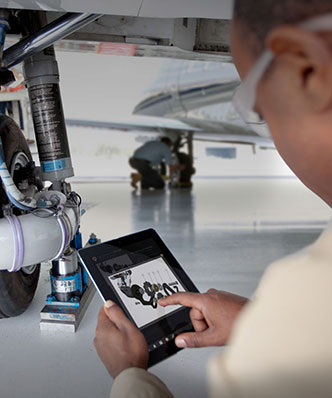Remote Monitoring – Introduction

The transformation from products to services has the potential to move enterprises from being providers of products to becoming service providers. At the same time, organizations can switch from one-time sale revenue to recurring monthly revenues for the services they provide. “It’s a massive shift for many and IoT assets will take much of the strain,” writes George Malim, the managing editor of IoT Now.
With analyst firm IDC reporting that manufacturers want to capture upwards of 30% of their revenues from services in the future, there’s a clear direction of travel towards servitization. However, the fire and forget products of today will have to radically alter to fit this model. They must become fully connected and integrated into the wider IoT ecosystem, sharing their data and delivering powerful business value. This evolution is explored in greater depth in the PTC whitepaper: Service Transformation: Evolving Your Service Business in the Era of Internet of Things.
PTC explores how everything from domestic washing machines to cars, heavy plant, healthcare equipment and factory machines will be connected and disseminating data for analysis. However, it is the higher value equipment, such as mining equipment, that has the strongest initial business case.

Specialised areas of the market have a high potential for success. Even though equipment can be dispersed across geographies, it is relatively small in volume. In addition, that equipment is valuable and tends to present a substantial cost in capex for its owner. Finally, the cost also makes it easier to extract savings and efficiencies that make an investment in IoT viable and attractive.
To see the transformative power of servitization for business, think of a piece of the expense typically associated with owning equipment for heavy plant. Now, instead of buying, an organization can choose an opex model based on hours of operation or a monthly fee. The savings are enormous.
However, product companies need to transform their service operations to enable this shift. That begins with monitoring as explained in the PTC document: Four reasons why monitoring is your best move for better service. This maximizes the efficiencies organisations can derive from effective monitoring, which provides the foundation for service transformation.
In essence, the key benefits outlined include: enablement of assessment before truck roll, thereby saving operational cost; the ability to resolve issues remotely with no on-site presence or activity; the capability to reduce downtime, thereby increasing productivity; the utilisation of remote diagnostics to accelerate time taken to diagnose on-site, thereby freeing up the time of maintenance workers; and finally increasing the probability of first visit resolution if truck roll is necessary.
In these scenarios, small enhancements can have a large impact on customer experience. For example, imagine a washing machine provider that has a machine that fails. Instead of sending out an engineer to repair the machine only to find out they don’t have the right replacement part, monitoring provides the manufacturer with the exact root cause of the issue. The engineer will arrive with the correct part the first time and can fix the washing machine quickly.
There’s real business value here and while it might sound small, with only incremental benefits, the knock-on effects can provide substantial competitive advantages in the market place.
4 Reasons Remote Monitoring is Your Best Move to Better Service

- Bottom line benefits through more effective and efficient service
- Top line growth based on service business innovation and improved customer satisfaction
- A risk-free way to start your IoT journey
- An attractive ROI
Service Transformation: Evolving Your Service Business in the Era of Internet of Things

How can manufacturers create new revenue streams while also competing more effectively in a global
market that seems fixated on lowest-cost production?
Service transformation, enabled by connected
technologies and alternative service approaches, is the key to diversifying manufacturing revenue
streams while generating unprecedented value for customers. In this paper, PTC, a global provider
of technology platforms and solutions that transform how companies create, operate and service
products, looks at changes that are enabling manufacturers to redefine service.




